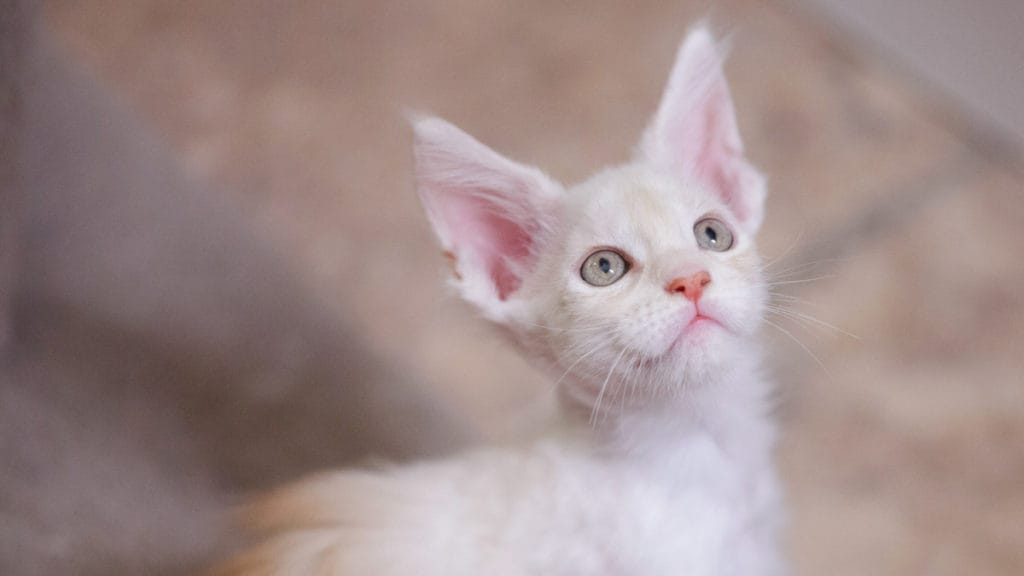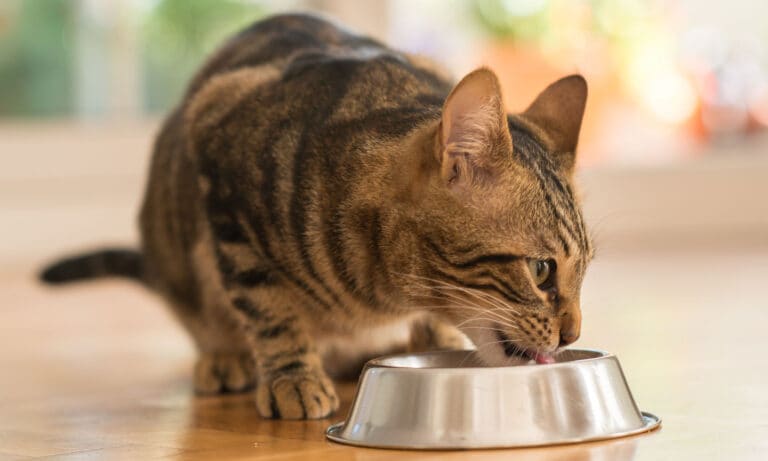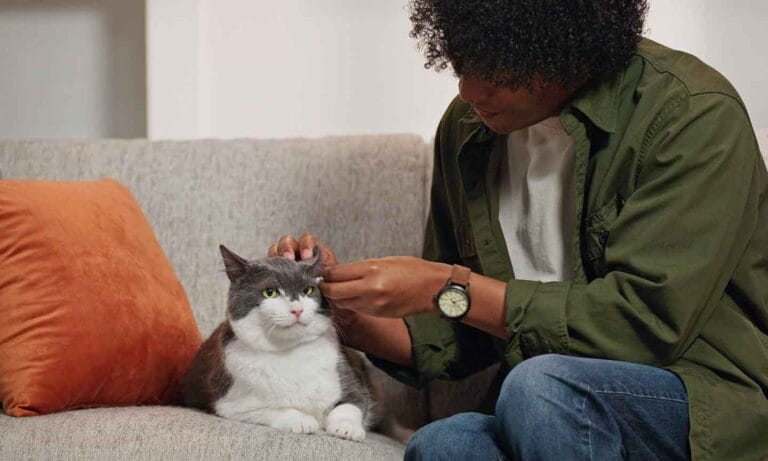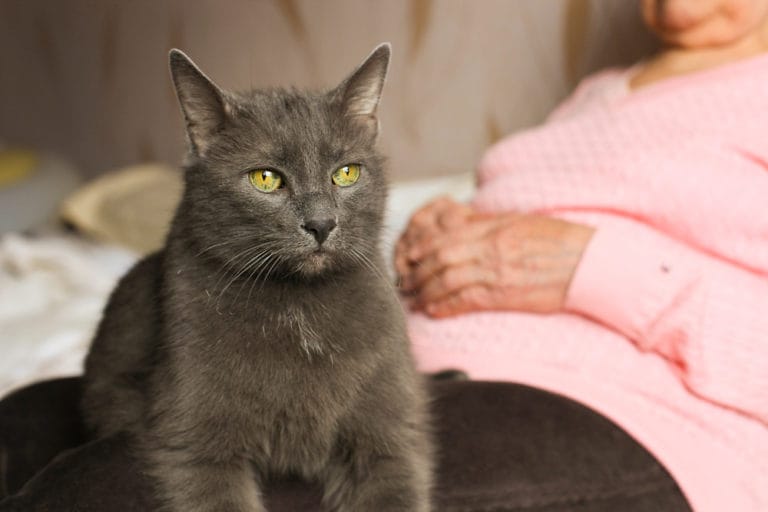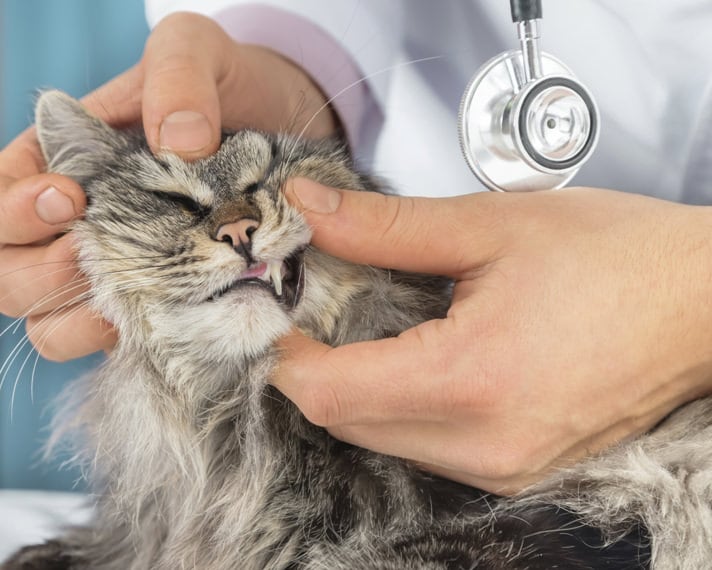Contributed by Dr. Diana Drogan, DVM.
If you love or have ever loved a furry feline, you might have experienced a dreadful instance when they urinated outside the litter box, or you’ve had to rush to an emergency clinic in the middle of the night because they couldn’t urinate at all. More often than not, cats experience stressful times in their lives that can trigger improper urination (urinating outside the litter box and on furniture, clothing or carpets) or the inability to urinate (urinary obstruction). Both are linked to disease conditions known as feline idiopathic cystitis (FIC) or feline lower urinary tract disorder (FLUTD). Typically, it occurs most commonly in neutered male cats; however, it does occur in female cats as well, which presents as something similar to a urinary tract infection (UTI). Just as in any stressful event in life, a subtle change in routine or environment such as having a party in your house, inviting a houseguest to stay a few nights, moving the location of the litter box, or changing the type of cat litter you use can all affect your cat’s emotional state and behavior. These changes may not seem extraordinary to you, but for your cat, it can literally feel like his life is ending. Stress not only alters a cat’s perception of security in his own home, but also affects his immune system. Stress is the main trigger for urinary disorders in cats, but luckily, there are various products you can use and changes you can make to help prevent you and your feline friend from having to make a scary ER visit.
Litter Box 101
In your household, especially if it’s a multi-cat household, it is important to have an adequate number of clean cat litter boxes available and accessible at all times to help avoid urinary tract inflammation and issues with urination. The litter box rule is one box per cat plus one (e.g., two cats in the house means you should have three litter boxes). Not only does the number of litter boxes need to be sufficient, but the type of litter boxes and litter you use is just as important. For example, a deep bin-type box may be perfect for your young cat who can easily jump up and get inside, and is on the timid side and prefers privacy. But it may not be so great for your older kitty who may be suffering from arthritis and is unable to jump or even step into a litter box at all. Then, of course, you have to evaluate what to fill the boxes with. You may have cats that do not seem to care, and no matter which brand or fragrance you choose, they still go to their box without complaint. However, you may have a cat that chooses litter how you choose your toilet paper, which for some can be a very unique choice! Typically, cats prefer unscented litters that are as close to the consistency of dirt as possible. But nowadays, corn husk and lightweight litters are popular options. Just remember that fragrances from scented litters may cause allergic reactions for sensitive kitties or give you the false sense that the box is clean when it isn’t. A dirty box can be a major deterrent for any cat in the house, especially a sensitive one that’s prone to urinary issues.
Nutrition
If you are a pet parent that has already experienced urinary issues with your cat before, then you are more than aware of the prescription urinary cat food that your veterinarian has likely recommended. Nutrition plays a major factor in the well-being of our pets—now more than ever. The changing trends in human medicine are proving that a proper diet and lifestyle can not only prevent disease conditions, but can actually reverse them. Prescription urinary cat food such as Hill’s Prescription Diet Urinary Care c/d or Royal Canin Veterinary Diet Urinary SO serve a valid medical purpose and really pay off in the long run by preventing future visits to your pet’s veterinarian. Hill’s cat foods balance urine pH to prevent urinary stones from forming, which can lead to urinary obstruction that’s similar to kidney stones in people. They also contain stress-modulating ingredients to keep your feline friend calmer and behaviorally more sound by reducing the stress response in their bodies. Less stress means a happy cat, and urine stays in the box instead of being left around your house!
Try These:
VetriScience UT Strength Feline Bite-Sized Cat Chews
My House Is Your House
After you’ve spoken with your pet’s veterinarian and made some changes with the litter boxes—and maybe even the food—what’s next? Unfortunately, after all that, your cat may still be experiencing some urinary issues. Like with many conditions, a multimodal approach is needed. Environment enrichment is the most important aspect of a house cat’s life. Indoor cats are no longer the hunting predators they once were, and in some cases, have become the epitome of a favorite cartoon cat we all have grown to love.
Obesity has played a major role in cat urinary health in recent years, and has risen quickly in pets in such a short time. By keeping your cats more active, you keep them at a healthier weight, which will encourage them to have a better, well-rounded life. This can be done by increasing the frequency of playtime when you are home or leaving them battery-powered interactive cat toys when you aren’t. Providing cat trees gives them something to climb, which cats love to do, and placing them by windows allows kitties to sunbathe and watch birds or critters go by. In addition to toys and some furniture to call their own, a water fountain near their cat tree may make it even more welcoming. Cats love the sound of water, and it entices them to drink more, which will improve urinary tract health.
Kidney Disease
One of the most commonly diagnosed diseases in older cats is kidney disease. Urinary conditions can make the body more prone to kidney disease; however, veterinarians see kidney failure in cats that never had urinary issues. Eventually, either poor nutrition, age, or conditions such as hyperthyroidism or heart disease will lead to kidney disease or kidney failure in cats. Early detection plays a crucial role in preventing, treating and slowing the progression of this dreadful disease. Be sure to bring your cat in for their annual and semi-annual veterinarian visits. The much needed lab work will detect the smallest kidney-related abnormalities in the blood and urine. Various at-home treatments, like mixing Vetoquinol Epakitin Supplement for Dogs & Cats into your pet’s food, and medications can then be started to prolong and improve the quality of your cat’s life tremendously. Once cats are six or more years old, annual bloodwork is strongly recommended. If you have already noticed that your elderly cat looks thinner, has a dull or unkempt coat, has a decreased appetite, or has been drinking more water, please take him to see his veterinarian to evaluate his kidney health immediately before it’s too late. The key to kidney disease management and avoiding kidney failure in cats is early detection and treatment. Without it, your cat may have late-stage kidney disease or kidney failure when it may be too late.

Share:
